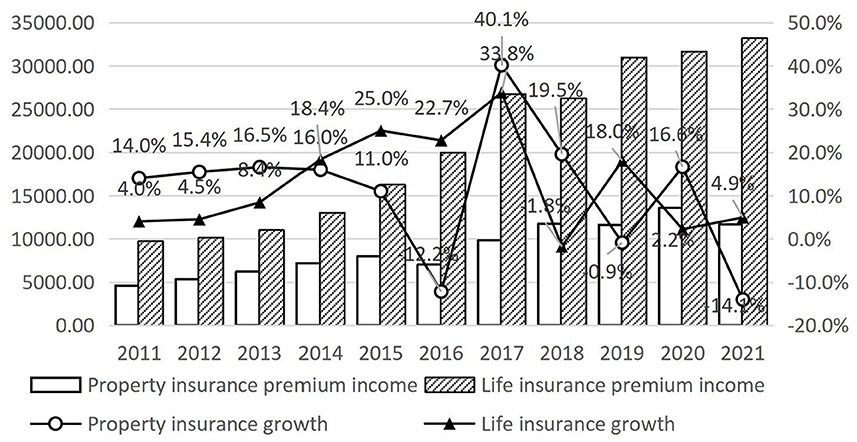
Introduction
As the world grapples with the effects of the unprecedented COVID-19 pandemic, various industries have been forced to adapt and evolve. The insurance industry is no exception. While the outbreak presented considerable challenges, it also opened up new opportunities for growth and innovation.
The impact of COVID-19 on the insurance industry
- Increased demand: The pandemic highlighted the importance of insurance coverage, leading to a surge in demand for life, health, and business interruption policies. Individuals and businesses sought protection against unforeseen risks, driving the insurance sector to respond and offer comprehensive coverage options.
- Accelerated digital transformation: COVID-19 acted as a catalyst for the insurance industry’s adoption of digital technologies. Insurers quickly shifted to online platforms, enabling remote operations, contactless interactions, and seamless claims processing. This digital transformation has enhanced customer experience, efficiency, and accessibility.
- New products and services: The pandemic has spurred the development of innovative insurance products and services. From pandemic insurance coverage to parametric policies, insurers have been proactive in addressing emerging risks and evolving customer needs. This adaptability has allowed the industry to expand its offerings and provide tailored solutions.
- Enhanced risk assessment: The pandemic has prompted a reevaluation of risk assessment practices in the insurance industry. Insurers are leveraging new data sources, predictive analytics, and artificial intelligence to better understand and mitigate risks. This improved risk assessment has led to more accurate pricing, improved underwriting processes, and increased profitability.
As the world gradually recovers, the insurance industry finds itself at a turning point. By harnessing the lessons learned during the COVID-19 crisis, insurers have the opportunity to reshape their strategies, adapt to the evolving landscape, and emerge stronger than ever before.
Insurance Trends in the Post COVID-19 Era
1. Shift in consumer behavior and priorities
The COVID-19 pandemic has brought about a significant shift in consumer behavior and priorities, leading to an increased demand for insurance coverage. With people becoming more conscious of their health and financial security, insurance has emerged as a crucial aspect of their lives. As a result, there has been a surge in the number of individuals seeking insurance to protect their health, income, and assets.
2. Growth of remote insurance services
To adapt to the changing landscape, insurance providers have embraced remote services. Customers can now connect with insurance agents, access policies, and make claims online, eliminating the need for in-person interactions. This growth in remote insurance services has provided convenience and accessibility for consumers, enabling them to secure coverage without leaving their homes.
3. Rise of digital insurance platforms
Digital insurance platforms have seen a significant rise in popularity in the post COVID-19 era. These platforms offer a seamless and user-friendly experience, allowing customers to compare policies, obtain quotes, and purchase insurance online. The ease of use and convenience provided by digital platforms have made them an attractive option for individuals seeking insurance coverage.
Overall, the post COVID-19 era has witnessed a resurgence of insurance as consumers prioritize their health and financial security. The industry has responded by adopting remote services and enhancing digital platforms to meet the evolving needs of customers. With these trends, insurance has become more accessible and convenient, ensuring individuals can protect themselves and their assets in uncertain times.
Evolving Insurance Products
1. Health insurance in a post-pandemic world
The COVID-19 pandemic has brought to light the importance of health insurance like never before. As individuals and businesses prioritize their health and well-being, the demand for comprehensive health coverage is on the rise. Insurance providers are adapting to this new reality by offering enhanced health insurance products that cover a wide range of medical expenses, including telemedicine services and mental health support.
2. Travel insurance and the new normal
The travel industry has been significantly impacted by the pandemic, leading to an increased need for travel insurance. In the post-COVID era, travelers are seeking coverage that protects them against trip cancellations, medical emergencies abroad, and unforeseen disruptions. Insurance companies are responding by introducing new policies that address these concerns, offering flexible options such as cancel-for-any-reason coverage and COVID-related medical expenses coverage.
3. Cyber insurance and data protection
With the surge in remote work and online transactions, the risk of cyber threats has escalated. As businesses navigate through this digital landscape, cyber insurance has become crucial for safeguarding sensitive data and mitigating financial losses. Insurance providers are developing comprehensive cyber insurance policies that cover data breaches, ransomware attacks, and legal expenses associated with cybersecurity incidents.
As the world adapts to the post-COVID era, insurance products are evolving to meet the changing needs of individuals and businesses. Whether it’s health insurance, travel insurance, or cyber insurance, staying protected in these uncertain times is more important than ever
The Role of Technology in Insurance
In the post-COVID-19 era, the insurance industry has seen a resurgence and a greater reliance on technology. Here are three key ways technology is transforming the insurance landscape:
1. Artificial intelligence and insurance underwriting
Artificial intelligence (AI) is revolutionizing the underwriting process by analyzing vast amounts of data quickly and accurately. AI algorithms can assess risk factors and determine premium rates without human intervention, resulting in more efficient and precise underwriting decisions.
2. Blockchain technology for claims and fraud prevention
Blockchain technology provides a secure and transparent platform for managing insurance claims and preventing fraud. It enables quick verification of policyholder information and streamlined claim processing. Additionally, the immutability of blockchain records reduces the risk of fraudulent claims and improves the overall integrity of the insurance industry.
3. Use of telematics in auto insurance
Telematics is a technology that collects and transmits data from vehicles. By using telematics devices or smartphone apps, insurance companies can track driver behavior, such as speed, acceleration, and braking patterns. This data allows insurers to offer personalized pricing based on the individual’s driving habits, fostering safer driving practices and potentially reducing premiums for responsible behavior.
These technological advancements not only increase efficiency and accuracy but also enhance customer experience and satisfaction. As the insurance industry continues to embrace technology, it is well-positioned to adapt to the changing needs of customers in the post-COVID-19 era.
Insurance Regulation and Policy Changes
1. Government initiatives to support the insurance industry
Government bodies around the world recognized the importance of a strong insurance sector in the post-COVID-19 era. Many countries have implemented initiatives to support the industry, such as relaxing capital requirements, providing financial aid, and offering incentives for insurance companies to adapt their products and services to the changing landscape.
2. Reassessment of risk management strategies
The pandemic highlighted the need for robust risk management strategies in various sectors. Insurance companies are reassessing their risk models and exploring new ways to adapt to emerging risks. This includes incorporating new factors like pandemics and cybersecurity into their underwriting and pricing processes.
3. Impact of economic recovery on insurance policies
As the global economy recovers from the pandemic, there will be shifts in insurance policies. For example, there may be an increased demand for business interruption insurance, as companies seek greater protection against future disruptions. Additionally, individuals and businesses may re-evaluate their coverage needs and seek more comprehensive policies to safeguard against future uncertainties.
The insurance industry has demonstrated resilience during challenging times, and the post-COVID-19 era presents both opportunities and challenges. Insurance companies that adapt to the evolving landscape, embrace technology, and provide innovative solutions will be well-positioned to thrive in the new normal.

Future Outlook for the Insurance Industry
In the post-COVID-19 era, the insurance industry is experiencing a resurgence and adapting to new trends and challenges. Here are some key points to consider:
1. Emergence of new insurance markets and products
The pandemic has highlighted the need for insurance coverage in various areas such as health, travel, and event cancellation. As a result, new insurance markets and products are emerging to cater to these evolving needs. Companies are exploring innovative solutions to provide adequate coverage and address emerging risks.
2. Integration of sustainability factors in insurance
Sustainability has become a critical factor in various industries, including insurance. Insurers are incorporating environmental, social, and governance (ESG) factors into their risk assessment and underwriting processes. This ensures that insurance products align with sustainable goals and address climate-related risks, thereby attracting environmentally conscious customers.
3. Adaptation to changing customer expectations
Customers are now seeking personalized and digitally driven insurance experiences. Insurers are investing in technology and data analytics to enhance customer engagement, simplify claims processes, and offer tailored coverage options. There is a greater focus on customer-centricity, and insurers are leveraging technology to provide seamless and convenient services.
Overall, the post-COVID-19 era presents both challenges and opportunities for the insurance industry. Adapting to changing market dynamics, embracing innovation, and meeting customer expectations will be pivotal in driving the future success of insurance companies.
Conclusion
In the post COVID-19 era, the insurance industry has experienced a resurgence as people recognize the importance of protecting their financial well-being and assets. Despite the challenges posed by the pandemic, the industry has shown resilience and adaptability, leveraging technology to meet the changing needs of customers.
The resilience of the insurance industry in the face of COVID-19
During the pandemic, insurance providers had to adapt quickly to remote work and digital solutions to continue serving their customers. The industry witnessed a surge in demand for health and life insurance products, as people became more aware of the risks and uncertainties brought about by the pandemic. Insurance companies also played a vital role in providing financial support and coverage for businesses affected by the crisis.
Key takeaways and recommendations for insurance providers
As the world emerges from the pandemic, insurance providers should focus on building trust and transparency with their customers. Proactive communication, personalized offerings, and digital capabilities will be key to meeting evolving customer expectations. Additionally, investing in data analytics and AI-powered technologies can help insurers better understand and mitigate risks, leading to more accurate pricing and customized coverage plans. Strengthening partnerships with insurtech companies can also drive innovation and enhance customer experience.
Overall, the insurance industry has demonstrated its resilience in the face of COVID-19 and has an opportunity to continue evolving and meeting the needs of customers in the post-pandemic era. By embracing technology and adopting customer-centric approaches, insurance providers can position themselves for success in the new normal.
